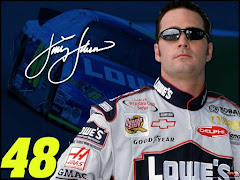The Cool Down Lap:
Talladega two-step nets Harvick thrilling win
by Alan Ross
The era of the two-car tandem in restrictor-plate races is here.
In one of the best races in NASCAR history, Kevin Harvick worked the two-car draft to perfection Sunday at Talladega Superspeedway in recording his 12th career victory, a pulsating photo finish on the third green-white-checkered ending to the Aaron’s 499.
The race shattered all kinds of records, starting with the third green-white-checkered. Never in Sprint Cup history had any event called for three attempts at winning a race. Okay, so they’ve only had the rule in effect for two years. Accompanying that record, though, was the stunning number of race leaders (29) and lead changes (88)—all Cup records.
The Big One never really happened, but enough smaller versions conspired to produce havoc on the famed 2.66-mile circuit renowned for its crashes as well as its breathtaking, full-throttle racing. But the developing story at Talladega has now become the entrenchment of the two-car draft phenomenon, an almost comical-looking bumper-to-bumper pairing that resembles two bugs in mating season.
The odd coupling debuted last year at Talladega in grand style, eliciting awe and wonder from fans and race commentators alike for its mind-boggling effectiveness. This year, the field wasted no time in getting right to it.
On the opening lap, Kyle Busch, pushed by Jeff Burton, took the lead from pole-sitter Jimmie Johnson. On the third lap, Denny Hamlin partnered with Joey Logano, roaring by the pack like the field was standing still and handing the lead to Logano. Hamlin then got pushed by Dale Earnhardt Jr., one of the afternoon’s hardest workers, to storm to the front. By the end of Lap 10 there had been an astonishing eight lead changes.
The visual effect makes the tandem look like it’s just been shot out of a gun. But though the charging duo tends generally to wax the field by an additional 10 miles per hour and dash out front by about a 100-yard lead, it ends almost as fast as it begins. In every instance the coupled cars tend to pull apart shortly after they’ve dusted the field, the rear or “pushing” car ultimately in danger of burning up its engine for lack of clean air if the two don’t separate. So they uncouple, at which point the pack shortly rejoins the two racehorses or yet another tandem goes roaring by in their place. It’s fun to watch, and in Harvick’s case, it was flawlessly played.
With crashes sabotaging race leader Jamie McMurray’s quest for his third straight restrictor-plate victory during the first two green-white-checkered attempts, Harvick paired with McMurray following the historic third G/W/C restart, giving the two a commanding lead. It appeared McMurray had the win coming off the final corner, but Harvick orchestrated it like a master—waiting, waiting, waiting, then at the last second pulling out on the low side to nip McMurray by 12 one-hundredths of a second.
After seeing that thriller, I found myself wishing that NASCAR would schedule a minimum of one race a month at Talladega and jettison some its cookie-cutter 1.5-mile yawners that rarely produce anything beyond bland racing.
Alan Ross is the author of 32 books and a regular contributor to American Profile. E-mail: alanross_sports@yahoo.com
© Sportland 2010
Sunday, June 27, 2010
Subscribe to:
Posts (Atom)








%201st,%20barney%20oldfield,%20louis%20chevrolet.jpg)























